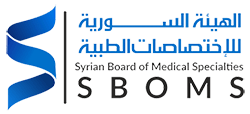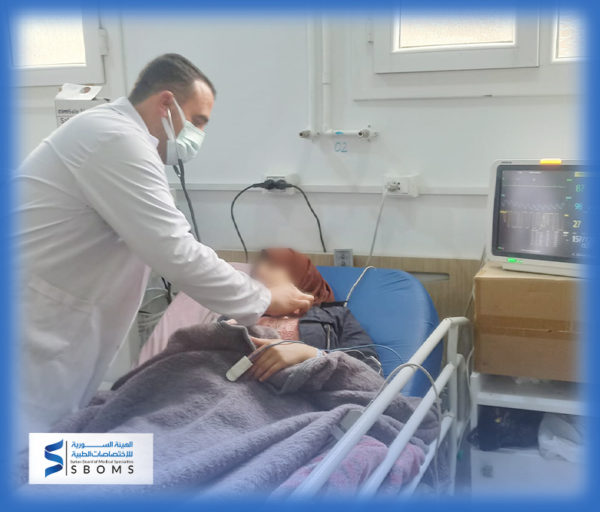A 22-year-old patient arrived at the emergency department of Al-Quds Hospital with a complain of convulsions. The patient was evaluated by the resident doctor in internal medicine Dr. Saad Al-Hussein. Who found that the patient was 33 weeks primipara (bearing her first child) pregnant, with arterial hypertension 180/100 with generalized tonic-clonic convulsions. The airway was liberated to prevent inhalation, and an 8L/min oxygen mask was applied. Companions of the patient were questioned, they said that the patient had complained of epigastric discomfort, headache, vomiting, impaired vision, and convulsions for many hours before arriving the hospital. No previous medical history or any neurological abnormalities that might cause the convulsions. So the clinical impression was pre-eclampsia.
The patient was admitted to the Intensive Care Unit, and magnesium sulfate was administered intravenously for convulsion control and hydralazine for high arterial pressure control. Later labs studies confirmed the existence of proteinuria 460 mg in a random urine sample analysis.
In the intensive care unit, the patient was subjected to sudden cardiac and breathing arrest. The cardiopulmonary resuscitation was comprehensively done and an endotracheal tube was placed with cardiac massage, in the same time displacing of the uterus to the left side, with the administering intravenous adrenaline. The resuscitation continued for four minutes until the pulse was restored. Then the patient was placed on the mechanical ventilation device; and preparations were made to terminate the pregnancy to save both the mother and the fetus.
An emergency termination of pregnancy was done and a newborn in good general condition. Then weighing 1400 g, in the Maternity and Childhood Hospital in Al-Dana. The patient returned immediately after birth to the Intensive Care Unit at Al-Quds Hospital to be placed on the mechanical ventilation with sedation and loading of magnesium sulfate 1 g / h for 24 hours with monitoring of pressure and pulse. After 24 hours, the patient was weaned from the mechanical ventilation device, and has a clinically and laboratory reassessment, which were within normal values except for arterial hypertension 160/100. The patient was placed on an oral antihypertensive and monitored in the intensive care unit for 4 days, then was discharged home in a good general condition.
Discussion
Possible symptoms of preeclampsia include:
- High blood pressure
- Too much protein in the urine
- Swelling in a woman’s face and hands (a woman’s feet might swell too, but swollen feet are common during pregnancy and may not signal a problem)
- Systemic problems, such as headache, blurred vision, and right upper quadrant abdominal pain
After 20 weeks of gestation in a previously normotensive patient.
There are several signs and symptoms that occur before convulsion, including (high arterial tension, persistent headache, visual disturbances, and epigastric pain), which indicate the severity of the condition and call for an emergency termination of pregnancy to save the mother and fetus.
Among the maternal complications are liver and kidneys injuries, cardiac and respiratory arrest (as happened in our case) and the occurrence of hemorrhagic or ischemic brain damage that might result in long-term neurological consequences, which is the leading cause of mortality in eclampsia patients. Fetal complications include intrauterine hypoxia, placental abruption, and fetal mortality.
Pregnant women should check their blood pressure and not ignore any symptoms that arise, such as:
- epigastric discomfort,
- blurred vision,
- photophobia,
- temporary blindness,
- severe or persistent headaches,
and refer to primary care providers if any of these symptoms occur to avoid complications.

